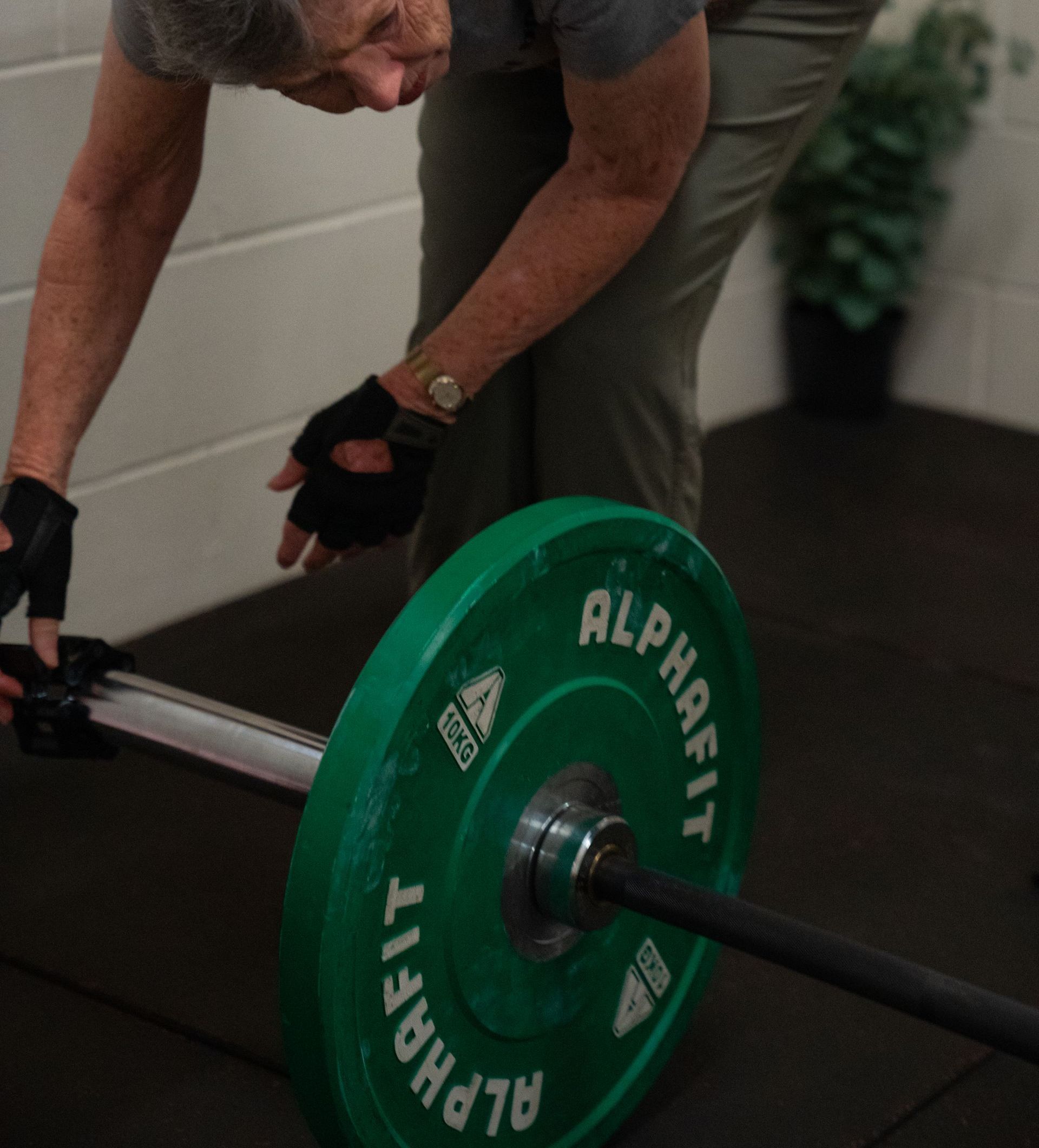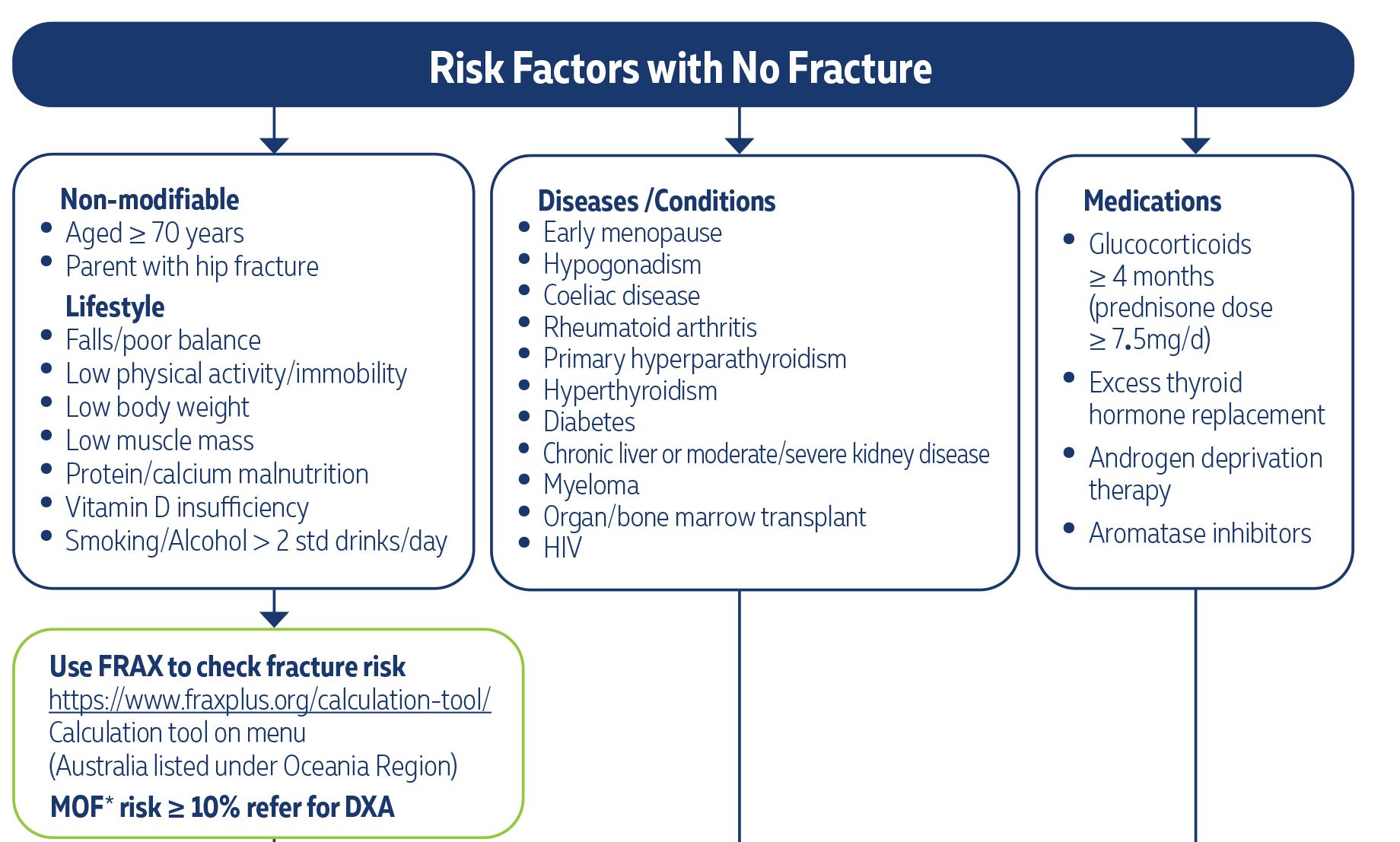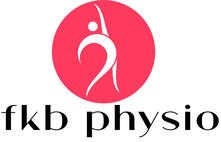Osteoporosis myths
This month it was world osteoporosis day. It feels like as good a time as any to go through a few of the more common misconceptions we hear in our clinic around bone health.

Myth: Osteoporosis only happens to very frail/elderly people
Reality: This is not true. Though age is a major risk factor, it can affect anyone of any age.
For those who are over 50, it is estimated that > 66% of all Australians above this age have what is considered poor bone health. It is nothing to be ashamed of and does not reflect anything about your general health or frailty (Australian institute of health and wellness, 2020).
Stress fractures, which are common in younger athletes, can also be an indicator of poor bone health - it can affect people at any age & fitness level.
Myth: Osteoporosis means you are unfit/unhealthy
Reality: Osteoporosis is not a reflection on your overall health or fitness levels. In fact, some research has found bone density in endurance athletes such as long distance cyclists can be lower than that of sedentary individuals (Olmedillas et al., 2012). Many people who have osteopenia or osteoporosis have been exercising their whole lives and still end up with it. It is important to remember that so much of our bone health is determined from a young age, and that a lot of factors impacting bone health are out of our control. For example, people who are of a very small build are at more risk. This is something that we essentially have no control over.
Myth: You know whether you have osteoporosis or not based on how you feel.
Reality: Unfortunately osteoporosis is silent. There are no symptoms. It is essentially impossible to know whether you have it or not without a scan. This is not to scare everyone into having a scan by any means, but if you carry some of the risk factors (the most obvious risk factor being simply age) it is worth checking out, as we do with screening for numerous other health conditions.
Here is a (non exhaustive) list of risk factors for having poor bone health from the RACGP website:

Myth: Only women get osteoporosis
Fact: Approximately 30% of all healthcare spending relating to poor bone health in Australia last year was on men (Australian institute of Health and Wellness, 2023).
Myth: The only risk of osteoporosis is falling and fracturing a hip
Fact: Insufficiency fractures are also a risk with osteoporosis. That is, fractures that occur from very low load incidents when a fracture ordinarily should not occur (e.g. pushing hard against something). These are not “broken bones” in the way you may think of one; a bone is not snapped in half, rather, it is that the bone is compressed. In the case of a vertebral fracture, the vertebrae will ‘crush’ down and become shorter in size, often more specifically at the front of the vertebrae, leading to a loss of height and an increased forward curve in the spine. Unfortunately these types of fractures can occur in the absence of any falls.
Myth: You can’t change it: building bone density as an adult is impossible
Fact: This is not true, at least not for everyone. Research has found that it may be possible to build bone density for some people, even those over 50, even those with osteoporosis. The degree to which this can occur is fairly minor in the literature; for example the famous LIFTMOR trial (Watson et al., 2018) found an average of about 1-4% improvement in bone density with strength training which does not meet minimal clinical significance. However, this is only a very short period of time (8 months) and has promising potential long term implications (e.g. 1-4% a year over 20 years of strength training = ?).
There are also some case studies in the literature indicating significant improvement, and anecdotally we have seen similar.
For example, Meigh et al. (2022) completed research on older adults with osteoporosis lifting kettlebells and found a 12.7% increase in BMD in the spine and 5.9% at the femoral neck on one of their female participants. This piece of data alone disproves the idea that it is impossible to improve bone density after a certain age - though again, these results will not be the case for everyone.
Myth: weight bearing exercise, such a walking or yoga, is enough to improve bone density.
Reality: Unfortunately, though the term weight-bearing exercise is commonly used to refer to the type of exercise beneficial for bones, light exercise like walking or yoga does not cause adequate strain on the bones to facilitate improved bone density (Healthy Bones Australia, 2024).
Bones adapt to the load placed upon them. There needs to be adequate strain on the bone to cause deformation of the bone, which then leads to laying down of new bone cells. If there is not enough load on bones, they gradually become less dense over time. It is thought that the degree of loading on bones needs to be supra-physiological, that is, much bigger than normal day to day loads to facilitate new bone growth. Resistance training that causes large muscle forces that then pull on bones is a way to facilitate this (
Myth: Running improves bone density.
Reality: Some research has found that runners, and active individuals in general, are likely to have slightly higher bone density than their sedentary counterparts (Scofield et al., 2012). Endurance runners, however, may have lower bone density than sedentary people, likely due to the specific metabolic conditions caused by endurance sports that are inherently difficult for bone density maintenance (Scofield et al., 2012).
Running is considered moderate to high impact, meaning the forces going through your bones when your feet hit the ground may be 2-4 times body weight (REF). Though this is likely to be large enough to cause some bone deformation & therefore adaptation, the repetitive nature of running means that it is not as effective as more short/sharp doses of loading for bones, as the cells receptive to load in your bones tend to become desensitised after ~20 foot falls (Warden et al., 2019).
Observational research indicates that runners who participate in strength training or cross-train in sports that involve multi directional jumping and hopping have better bone density than those who dont (Warden et al., 2019).
Essentially, running is not a great form of exercise to build bone, due to its repetitive nature. Distance running in particular can at times be detrimental to bone health due to the specific metabolic demands of the activity. This does not mean running isnt good for you for other reasons, or that you should stop running; rather that if you are a runner, you may need to supplement it with other activities to protect your bone health, and that it is not likely to be worthwhile using as an exercise modality to build bone health.
Take home points:
Resistance training with progressively heavier weights is one of the best ways to reduce loss of bone density & potentially increase it in some cases; to reduce loss of muscle mass associated with ageing; and reduce falls risk. Having an adequate intake of food, meaning calories in general as well as enough protein & calcium is also necessary to protect your bone health.
We offer supervised group strength training for bone health - get in touch to get started.
- Australian Institute of Health and Wellness. (25 August 2020). Osteoporosis. https://www.aihw.gov.au.
- Healthy Bones Australia (2024), Exercise Prescription to Support the Management of Osteoporosis For Physiotherapists and Exercise Physiologists February 2024, https://healthybonesaustralia.org.au/wp-content/uploads/2024/02/hba-ex-presc-final-compressed.pdf
- Neil J. Meigh, Justin W.L. Keogh, Wayne Hing, Effect of kettlebell training on bone mineral density in two older adults with osteoporosis: a multiple-case study from the BELL trial.
- Olmedillas, H., González-Agüero, A., Moreno, L.A. et al. Cycling and bone health: a systematic review. BMC Med 10, 168 (2012). https://doi.org/10.1186/1741-7015-10-16
- Scofield, Kirk L. MD, CAQ1,2; Hecht, Suzanne MD, CAQ, CCD1. Bone Health in Endurance Athletes: Runners, Cyclists, and Swimmers. Current Sports Medicine Reports 11(6):p 328-334, November/December 2012. | DOI: 10.1249/JSR.0b013e3182779193
- Warden SJ, Edwards WB, Willy RW. Preventing Bone Stress Injuries in Runners with Optimal Workload. Curr Osteoporos Rep. 2021 Jun;19(3):298-307. doi: 10.1007/s11914-021-00666-y. Epub 2021 Feb 26. PMID: 33635519; PMCID: PMC8316280.
- Watson, S. L., Weeks, B. K., Weis, L. J., Harding, A. T., Horan, S. A., & Beck, B. R. (2018). High-Intensity Resistance and Impact Training Improves Bone Mineral Density and Physical Function in Postmenopausal Women With Osteopenia and Osteoporosis: The LIFTMOR Randomized Controlled Trial. Journal of Bone and Mineral Research, 33(2), 211-220. https://doi.org/10.1002/jbmr.3284

